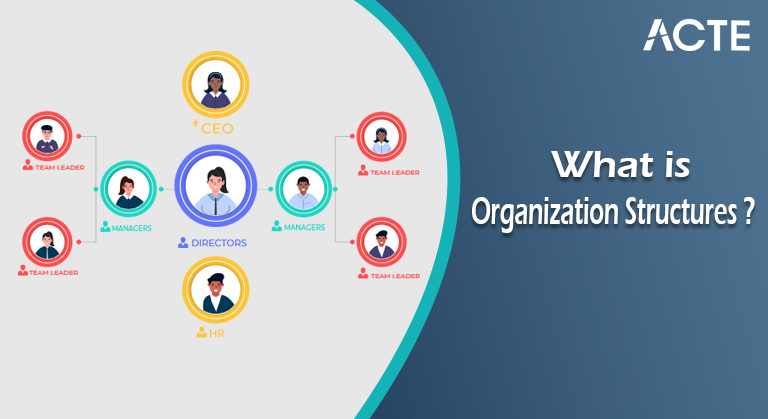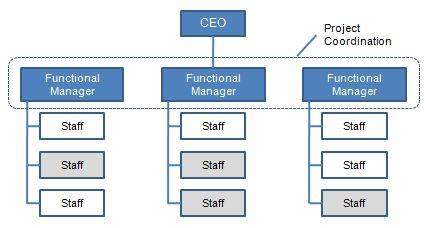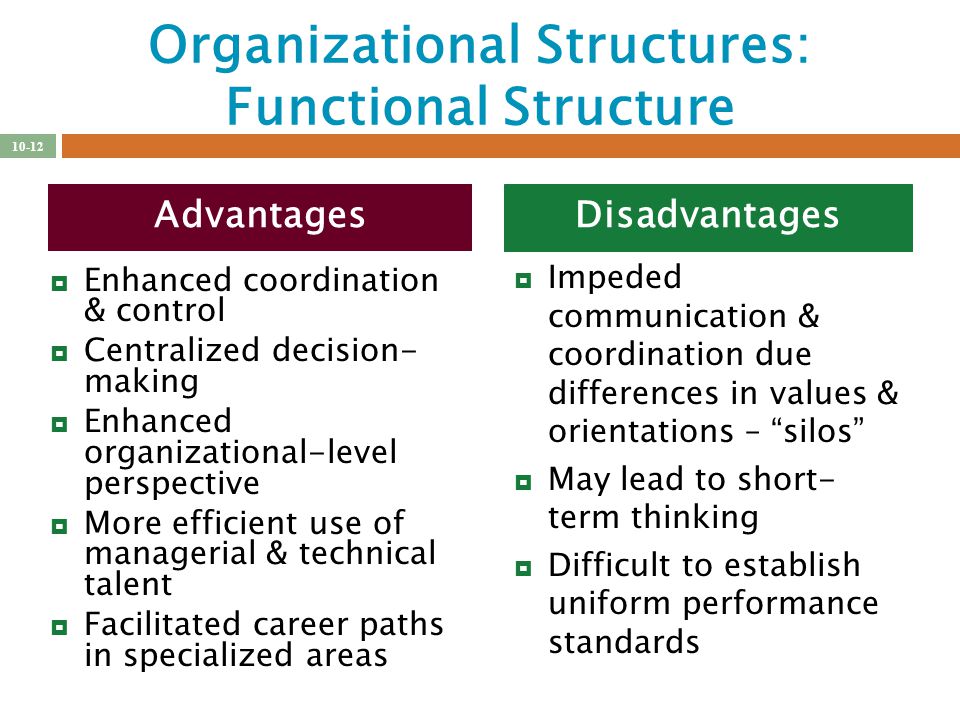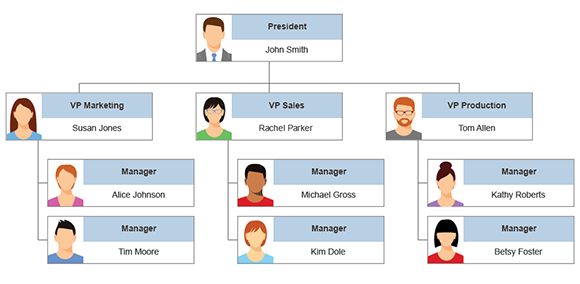
- Introduction to Organization Structures
- Key Takeaways
- Kinds of Organizational Structures
- Advantages of Organizational Structures
- What Is an Organizational Structure Example?
- The Bottom Line
- Issues Created by a Misaligned Oraganizational Structure
- The importance of aligning the structure with the business strategy
- Sorts of Organizational Structures
- Open boundary structures (hollow, modular virtual and learning)
- Benefits of this sort of construction incorporate the accompanying
- Outline: Points to recall
- A hierarchical design is a framework that diagrams how certain exercises are guided to accomplish the objectives of an association. These exercises can incorporate principles, jobs, and obligations.
- The hierarchical construction additionally decides how data streams between levels inside the organization. For instance, in a unified design, choices stream starting from the top, while in a decentralized construction, dynamic power is dispersed among different levels of the association. Having an authoritative construction setup permits organizations to stay proficient and focused.
- An authoritative construction traces how certain exercises are coordinated to accomplish the objectives of an association.
- Fruitful hierarchical designs characterize every worker’s work and the way that it fits inside the general framework.
- A unified construction has a characterized hierarchy of leadership, while decentralized designs give pretty much every worker getting a significant degree of the individual organization.
- Sorts of hierarchical constructions incorporate utilitarian, divisional, futarchy, and framework structures.
- Senior pioneers ought to consider an assortment of variables prior to concluding which kind of association is best for their business, including the business objectives, industry, and culture of the organization.
- Organizations of every kind imaginable utilize authoritative constructions vigorously. They characterize a particular order inside an association. An effective authoritative design characterizes every representative’s work and the way that it fits inside the general framework. Set forth plainly, the hierarchical construction spreads out who does what so the organization can meet its destinations.
- This organizing gives an organization a visual portrayal of how it is molded and the way that it can best push ahead in accomplishing its objectives. Hierarchical constructions are ordinarily delineated in some kind of graph or chart like a pyramid, where the most impressive individuals from the association sit at the top, while those with minimal measure of force are at the base.
- Not having a proper construction set up may demonstrate hard for specific associations. For example, representatives might experience issues knowing to whom they should report. That can prompt vulnerability regarding who is liable for what in the association.
- Having a construction set up can assist with proficiency and give clearness to everybody at each level. That additionally implies every single division can be more useful, as they are probably going to be more centered around energy and time.
- An authoritative construction is either concentrated or decentralized. Customarily, associations have been organized with concentrated initiative and a characterized hierarchy of leadership. The military is an association popular for its profoundly incorporated design, with a long and explicit order of bosses and subordinates. In a brought together authoritative framework, there are extremely clear responsibilities regarding every job, with subordinate jobs defaulting to the direction of their bosses.
- There has been an ascent in decentralized associations, just like the case with numerous innovation new businesses. This permits organizations to stay quick, dexterous, and versatile, with pretty much every representative getting an undeniable degree of individual office. For instance, Johnson and Johnson is an organization that is referred to for its decentralized structure.2 As an enormous organization with north of 200 specialty units and brands that capacity in at times totally different businesses, each works independently. Indeed, even in decentralized organizations, there are still generally underlying progressive systems, (for example, the head working official working at a more significant level than a section level partner). Notwithstanding, groups are enabled to settle on their own choices and arrive at the best resolution without essentially getting “endorsement” from up top.
- Setting up an authoritative construction can be extremely gainful to an organization. The construction characterizes an organization’s order as well as permits the firm to design the compensation structure for its representatives. By setting up the hierarchical construction, the firm can conclude compensation levels and ranges for each position.
- The construction likewise makes tasks more productive and significantly more powerful. By isolating workers and capacities into various offices, the organization can perform various tasks immediately consistently.
- Likewise, an exceptionally clear hierarchical design illuminates representatives how best to finish their positions. For instance, in a various leveled association, representatives should work more diligently at purchasing favor or pursuing those with dynamic power. In a decentralized association, workers should take on more drive and bring inventive critical thinking to the table. This can likewise assist with setting assumptions for how representatives can follow their own development inside an organization and underscore a specific arrangement of abilities as well concerning possible workers to check on the off chance that such an organization would be a solid match with their own advantages and work styles.
- There are whole fields of study in light of how to enhance and best design associations to be the best and useful. Senior pioneers ought to consider an assortment of variables prior to concluding which sort of association is best for their business, including the business objectives, industry, and culture of the organization.
- Authoritative design adjusts and relates portions of an association, so it can accomplish its greatest presentation. The construction picked influences an association’s accomplishment in completing its technique and targets. Administration ought to comprehend the qualities, advantages and limits of different authoritative constructions to aid this essential arrangement.
- The case for adjusting authoritative construction to the endeavor’s business technique.
- Key components of hierarchical design.
- Kinds of authoritative constructions and the potential advantages and constraints of each.
- The effect of an association’s progressive phase on its design.
- Correspondences, innovation, measurements, worldwide and lawful issues.
- Hierarchical design is the strategy by which work moves through an association. It permits gatherings to cooperate inside their singular capacities to oversee errands. Customary hierarchical designs will quite often be more formalized-with representatives gathered by work (like money or activities), area or product offering. Less customary designs are all the more approximately woven and adaptable, with the capacity to react rapidly to changing business conditions.
- Hierarchical designs have developed since the 1800s. In the Industrial Revolution, people were coordinated to add parts to the assembling of the item dropping down the sequential construction system. Frederick Taylor’s logical administration hypothesis improved the manner in which errands were performed, so laborers performed just one assignment in the most proficient manner. In the twentieth century, General Motors spearheaded a progressive authoritative plan wherein each significant division made its own vehicles.
- Today, hierarchical designs are evolving quickly from virtual associations to other adaptable constructions. As organizations proceed to advance and build their worldwide presence, future associations might exemplify a liquid, free-shaping association, part possession and an innovative methodology among all individuals. See Inside Day 1: How Amazon Uses Agile Team Structures and Adaptive Practices to Innovate on Behalf of Customers.
- Underlying holes in jobs, work cycles, accountabilities, and basic data streams can happen when organizations wipe out center administration levels without taking out the work, driving representatives to take on extra liabilities.
- Lessened limit, ability, and deftness issues can emerge when a) lower-level representatives who step in when center administration is disposed of are unfit to play out the expected obligations and b) when more elevated level chiefs should take on more strategic obligations, limiting the worth of their authority abilities. The complication and ill-advised staffing can influence an organization’s expense structure, income, and capacity to convey labor and products.
- Light-footed associations can quickly convey individuals to address moving business needs. With assets sliced deep down, in any case, most associations’ staff individuals can zero in just on their nearby obligations, leaving a brief period, energy, or want to work outside their present place of employment scope.
- Eventually, reduced limit and slacking reaction times influence an association’s capacity to stay serious. Declining labor force commitment can diminish maintenance, decline client dedication, and cutoff authoritative execution and partner esteem.
- Which work is crucial, can be downsized, or ought to be wiped out.
- Existing job necessities, while distinguishing important new or altered jobs.
- Key measurements and accountabilities.
- Basic data streams.
- Dynamic authority by association level.
- See Meeting the Challenges of Developing Collaborative Teams for Future Success.
- Vertical-useful and divisional.
- Vertical and even lattice.
- Limit less (additionally alluded to as “open limit”)- secluded, virtual and cell.
- See What are regularly utilized association structures?
- Two principle kinds of vertical design exist, practical and divisional. The utilitarian construction separates work and representatives by specialization. It is a various leveled, typically in an upward direction incorporated, structure. It underscores normalization in association and cycles for particular representatives in generally slender positions.
- This conventional kind of association structures offices like creation, deals, innovative work, bookkeeping, HR, and promoting. Every office has a different capacity and spends significant time in that space. For instance, all HR experts are essential for a similar capacity and report to a senior head of HR. A similar announcing interaction would be valid for different capacities, like money or activities.
- In useful constructions, workers report straightforwardly to administrators inside their useful regions who thusly report to a central official of the association. The board from above must midway organize the specific offices.
- The association creates specialists in its particular regions.
- People perform just errands in which they are generally capable.
- This structure is sensible and straightforward.
- Impediments focus on coordination or deficiency in that department:
- Individuals are in specific “storehouses” and frequently neglect to facilitate or speak with different offices.
- Cross-useful movement is harder to advance.
- The construction will in general be impervious to change.
- It makes a practical and divisional association and spotlights on the work more than on individuals.
- It limits costs by sharing key individuals.
- It makes a superior harmony between season of finish and cost.
- It gives a superior outline of an item that is produced in a few regions or sold by different auxiliaries in various business sectors.
- Obligations might be indistinct, in this manner muddling administration and control.
- Answering beyond what each administrator, in turn, can be mistaking for the worker and chiefs.
- The double levels of leadership require participation between two direct managers to decide a representative’s work needs, work tasks, and execution principles.
- At the point when the capacity chief and the item chief set clashing expectations for the representative, the worker’s feeling of anxiety increments, and execution might diminish.
- Workers invest more energy in gatherings and organizing with different representatives.
- These inconveniences can be exacerbated in the event that the network goes past two-layered (e.g., representatives report to two directors) to multi-faceted (e.g., workers report to at least three supervisors).
- Capacity to use every one of workers’ abilities.
- Quicker reaction to showcase changes.
- Upgraded collaboration and data dividing between capacities, divisions, and staff.
- Trouble in conquering storehouses inside the association.
- Absence of solid administration and normal vision.
- The chance of representatives being unfavorably impacted by effectiveness endeavors.
- The chance of associations leaving change if rebuilding doesn’t further develop adequacy rapidly.
- Limitless authoritative designs can be made in fluctuated structures, including empty, particular, and virtual associations.
- Loss of command over capacities that influence representatives routinely.
- Limitation by specific businesses (e.g., medical services) on the degree of reevaluation.
- Absence of serious reevaluating choices.
Introduction to Organization Structures
Key Takeaways:
Understanding an Organizational Structure
Unified versus Decentralized Organizational Structures
Kinds of Organizational Structures
Useful Structure
Four kinds of normal hierarchical constructions are executed in reality. The first and most normal is a useful construction. This is likewise alluded to as a regulatory hierarchical construction and splits up an organization in light of the specialization of its labor force. Generally little to-medium-sized organizations execute a practical design. Separating the firm into offices comprising of promoting, deals, and tasks is the demonstration of utilizing an administrative authoritative design.
Divisional or Multidivisional Structure
The subsequent kind is normal among huge organizations with numerous specialty units. Called the divisional or multidivisional structure, an organization that utilizes this technique structures its administration group in light of the items, activities, or auxiliaries they work. A genuine illustration of this construction is Johnson and Johnson. With great many items and lines of business, the organization structures itself so every specialty unit works similar to claim organization with its own leader.
Flatarchy Structure
Flatarchy, a more up to date structure, is the third kind and is utilized among numerous new companies. As the name suggests, it smooths the order and levels of leadership and provides its representatives with a ton of independence. Organizations that utilization this kind of design have a fast of execution.
Framework Structure
The fourth and last hierarchical design is a lattice structure. It is likewise the most confounding and the most un-utilized. This structure frameworks representatives across various bosses, divisions, or offices. A worker working for a matrixed organization, for instance, may have obligations in the two deals and client assistance.

Advantages of Organizational Structures
Four Types of Organizational Structures
The four kinds of hierarchical designs are useful, divisional, flatarchy, and grid structures.
Key Elements of an Organizational Structure
Key components of an authoritative construction incorporate how certain exercises are guided to accomplish the objectives of an association, like guidelines, jobs, obligations, and how data streams between levels inside the organization.
What Is an Organizational Structure Example?
An illustration of an authoritative construction is a decentralized design, which gives people and groups high levels of independence without requiring a center group to consistently endorse business choices. A genuine illustration of this decentralized design is Johnson and Johnson. With huge number of items and lines of business, the organization structures itself so every specialty unit works just like own organization with its own leader.
What Is an Organizational Structure Chart?
Hierarchical constructions are typically represented in some kind of outline or graph like a pyramid, where the most impressive individuals from the association sit at the top, while those with minimal measure of force are at the base.
What Is the Best Organizational Structure?
There is nobody best hierarchical construction, as it relies upon the idea of the organization and the business it works in.
The Bottom Line
This article tends to the accompanying subjects connected with authoritative construction:
Foundation
Business Case
A sign of a very much adjusted association is its capacity to adjust and realign depending on the situation. To guarantee long haul feasibility, an association should change its design to fit new financial real factors without reducing center capacities and serious separation. Hierarchical realignment includes shutting the underlying holes obstructing authoritative execution.
Issues Created by a Misaligned Oraganizational Structure:
Quick revamping of specialty units, divisions or capacities can prompt insufficient, skewed authoritative constructions that don’t uphold the business. Misguided rearrangements might make huge issues, including the accompanying:
The importance of aligning the structure with the business strategy:
The way to beneficial execution is the degree to which four business components are adjusted:
Administration. The people are answerable for creating and conveying the methodology and checking results.
Association. The design, cycles, and tasks by which the system is conveyed.
Occupations. The vital jobs and obligations.
Individuals. The experience, abilities, and skills expected to execute the technique.
A comprehension of the interdependencies of these business components and the requirement for them to adjust to change rapidly and decisively are fundamental for accomplishment in the elite exhibition association. Whenever these four components are in a state of harmony, exceptional execution is more probable.
Accomplishing arrangements and supporting authoritative limits requires time and decisive reasoning. Associations should recognize the results the new construction or cycle is planned to deliver. This commonly requires recalibrating the accompanying:
Key Elements of Organizational Structures
Five components make a hierarchical construction: work plan, departmentation, designation, range of control and levels of leadership. These components include a hierarchical diagram and make the authoritative construction itself. “Departmentation” alludes to the manner in which an association structures its must facilitate work. “Range of control” signifies the quantity of people who report to a chief. “Hierarchy of leadership” alludes to a line of power.
The organization’s technique of administrative centralization or decentralization additionally impacts hierarchical constructions. “Centralization,” how much dynamic authority is limited to more significant levels of the executives, ordinarily prompts a pyramid structure. Centralization is for the most part suggested while clashing objectives and systems among working units make a requirement for a uniform approach. “Decentralization,” how much lower levels of the progressive system have dynamic power, regularly prompts a less fatty, compliment association. Decentralization is suggested while clashing systems, vulnerability or intricacy require nearby versatility and navigation.

Sorts of Organizational Structures
Authoritative constructions have advanced from unbending, in an upward direction incorporated, progressive, dictatorial constructions to somewhat limit less, enabled, arranged associations intended to react rapidly to client needs with altered items and administrations. Today, associations are normally organized upward, in an upward direction and evenly, or with open limits. Explicit kinds of constructions inside every one of these classifications are the accompanying:
Vertical structures (functional and divisional)
A useful authoritative diagram may look something like this:
A useful authoritative outline with the president at the top and afterward one line underneath showing various offices.
Benefits of a useful design incorporate the accompanying:
This construction turns out best for associations that stay incorporated (i.e., a greater part of the independent direction happens at more elevated levels of the association) since there are not many divided worries or goals among useful regions (e.g., promoting, creation, buying, IT). Given the concentrated direction, the association can exploit economies of scale in that there are logical incorporated buying capacities.
Benefits of the grid structure incorporate the accompanying:
Disservices of grid associations incorporate the accompanying:
Network structures are normal in intensely project-driven associations, for example, development organizations. These constructions have outgrown project structures in which representatives from various capacities framed groups until finishing a task and afterward returned to their own capacities. In a lattice association, each undertaking administrator reports straightforwardly to the VP and the senior supervisor. Each venture is, basically, a little benefit community, and in this way, head supervisors normally settle on business choices.
The grid-organized association likewise gives more noteworthy permeability, more grounded administration, and more control in enormous, complex organizations. It is additionally appropriate for the improvement of business regions and coordination of complicated cycles with solid conditions.
Network structures present troublesome difficulties for experts accused of guaranteeing value and decency across the association. Administrators working in network designs ought to be ready to mediate through correspondence and preparing on the off chance that the construction compromises these goals. Besides, the administration should screen connections between directors who offer direct reports. These connections between a representative’s administrators are pivotal to the achievement of a framework structure.
Open boundary structures (hollow, modular virtual and learning)
Later patterns in primary structures eliminate the conventional limits of an association. Commonplace inner and outer obstructions and authoritative boxes are killed, and all hierarchical units are successfully and deftly associated. Groups supplant divisions, and the association and providers function as intently together as parts of one organization. The order is level; status and rank are negligible. Everybody including top administration, chiefs and representatives takes an interest in the dynamic cycle. The utilization of 360-degree input execution examinations is normal also.
Benefits of limitless associations incorporate the accompanying:
Impediments incorporate the accompanying:
Tedious cycles.
Empty associations. Empty constructions partition work and representatives by center and noncore skills. Empty constructions are a reevaluating model in which the association keeps up with its center cycles inside however re-appropriates noncore processes. Empty constructions are best when the business is value cutthroat and decisions for rethinking exist. An illustration of an empty design is a games association that has its HR capacities (e.g., finance and advantages) took care of by outside associations.

Benefits of this sort of construction incorporate the accompanying:
Limiting upward.
Empowering the association to zero in on its center item and disposing of the need to foster mastery in noncore capacities.
Weaknesses include:
Particular associations.
Particular designs vary from empty associations in that parts of an item are rethought. Particular designs might keep a centerpiece of the item in-house and rethink noncore segments of the item. Networks are added or deducted as requirements change. For a secluded construction to be a choice, the item should have the option to be broken into pieces. For instance, PC maker Dell purchases parts from different providers and collects them at one focal area. Providers toward one side and clients at the other become pieces of the association; the association imparts data and developments to all. Customization of items and administrations results from adaptability, innovativeness, cooperation, and responsiveness. Business choices are made at corporate, divisional, venture, and individual colleague levels.
Conclusion
Each association needs a construction to work methodicallly. The hierarchical constructions can be utilized by any association assuming that the design squeezes into the nature and the development of the association.






